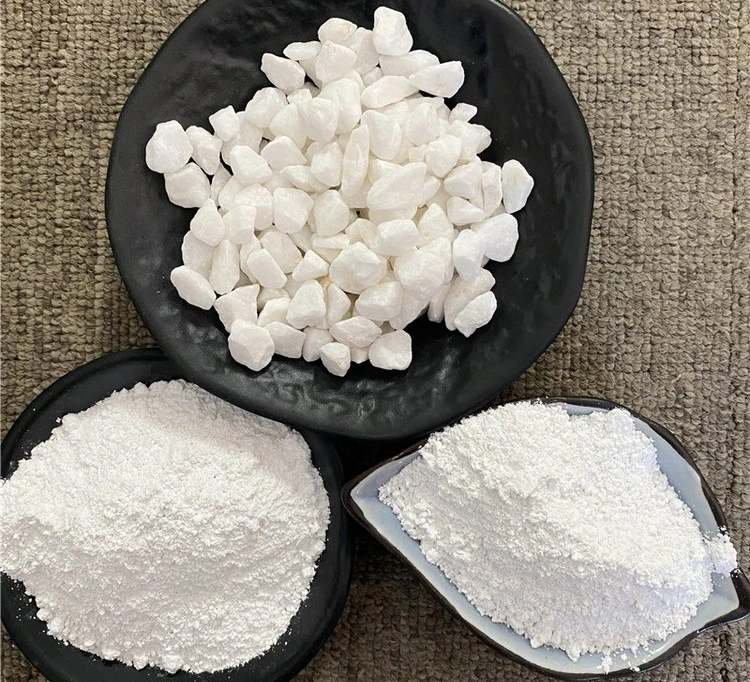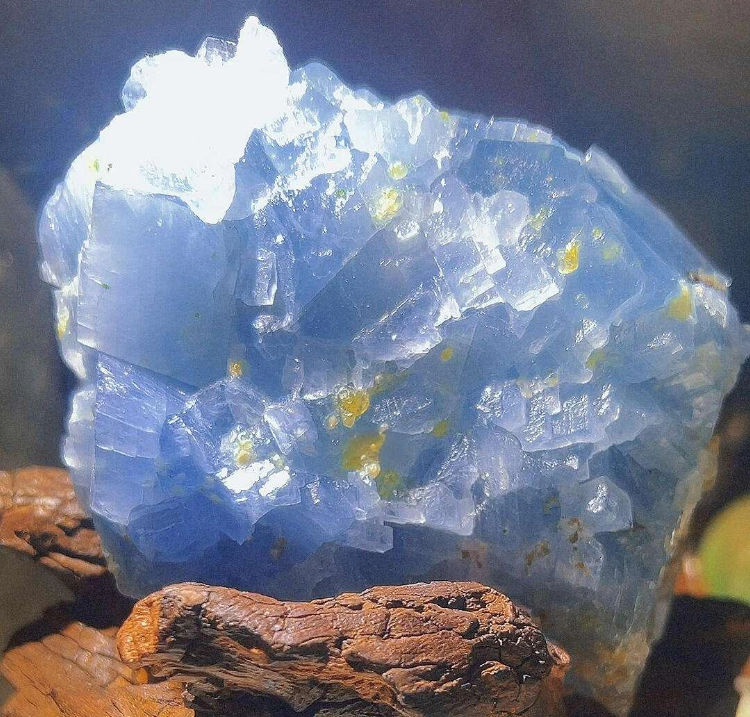Calcite is a calcium carbonate mineral, commonly found in natural calcium carbonate. It is widely distributed and has various crystal shapes. These forms can be clustered crystals, granular, blocky, fibrous, stalactitic, or earthy. Striking calcite produces many square fragments, hence the name.
Calcite Characteristics
Calcite’s color varies depending on impurities, such as iron or manganese. It can be yellow, red, brown, or black, but is usually white or colorless. Colorless, transparent calcite is called Iceland spar. This type of calcite has a fascinating property: it creates double images. Iceland spar is an important optical material. Calcite is the main mineral in limestone and marble, used in many industries. Limestone forms caves, and stalactites and stalagmites inside are made of calcites. Calcites belongs to the hexagonal crystal system and has perfect rhombohedral cleavage.
It has a glassy luster, is transparent to translucent, and is usually white or colorless. Other colors are common, and the streak is white. It has a hardness of 3.0 and a specific gravity of 2.6–2.8. It reacts vigorously with cold dilute hydrochloric acid, producing bubbles. Pure, transparent calcite is called Iceland spar, which has strong birefringence and three complete cleavages

Applications of Calcite
In industry, calcite has significant uses as an important raw material in metallurgy, cement, plastics, glass, ceramics, rubber, papermaking, synthetic fibers, and other industries:
- Metallurgical Industry: Calcite is commonly used as a flux in the smelting of iron, steel, copper, and other metals, helping to remove impurities and improve the smelting process.
- Cement Production: Calcite is a key raw material in cement production, providing calcium sources that aid in the hardening of cement.
- Plastics Industry: Calcite is used as a filler in plastics, enhancing the durability, hardness, and cost-effectiveness of the material.
- Glass Manufacturing: Calcite is used in glass production to provide calcium, improving the strength and transparency of the glass.
- Ceramics Industry: Calcite is used as a flux in ceramics, helping to improve thermal stability and glossiness.
- Rubber Industry: As a filler in rubber, calcites increases the hardness and wear resistance of the rubber.
- Papermaking Industry: Calcite is used as a filler in paper production, improving the whiteness and smoothness of the paper.
- Synthetic Fibers: Calcite is used in the production of synthetic fibers to enhance their strength and durability.
- Optical Applications: Transparent, colorless calcites (Iceland spar) exhibits birefringence and is often used in polarizing prisms and microscopes.
- Gemology: Brightly colored calcite is often cut into gemstones for collection, but due to its low hardness, it is not suitable for setting in jewelry.
- Decorative Materials: Calcite is a key component of many decorative marbles, commonly used in building materials and sculpture.
- Cultural and Artistic Uses: Calcite is also used to create ornamental stones and carved art pieces, serving as a medium for traditional cultural expression.
Other Fields:

- Transparent calcites with five colors is called Iceland spar and is highly valued as an optical material due to its strong birefringence.
- In gemology, brightly colored calcite is often used to cut gemstones, but due to its low hardness and perfect cleavage, it is unsuitable for setting, only for collection. Well-formed crystal clusters can also be used as ornamental stones.
- Additionally, calcite is a key component of many important decorative stones (such as white marble and chrysanthemum stone) and ink stones (like Songhua inkstone and red silk inkstone), as well as various types of decorative marble.
- Iceland spar, due to its birefringence, is often used in polarizing prisms. When cut into cylindrical shapes, it can be used as a prism in microscopes to test the optical properties of minerals. The quality requirements include being colorless and transparent, free from bubbles or cracks, and not containing twinning or distortions, with a minimum size of 0.5 inches (12.5mm) in any dimension.
Conclusion
Calcite, with its unique properties such as birefringence, rhombohedral cleavage, and chemical reactivity, serves as a versatile material across diverse industries. From optics and construction to environmental science and agriculture, its applications highlight its geological significance and practical utility. As technology advances, calcites continues to play a vital role in both traditional and innovative fields, underscoring its enduring importance in scientific and industrial contexts.
Epic Powder

Epic Powder, 20+ years of work experience in the ultrafine powder industry. Actively promote the future development of ultra-fine powder, focusing on crushing, grinding, classifying and modification process of ultra-fine powder. Contact us for a free consultation and customized solutions! Our expert team is dedicated to providing high-quality products and services to maximize the value of your powder processing. Epic Powder—Your Trusted Powder Processing Expert !
